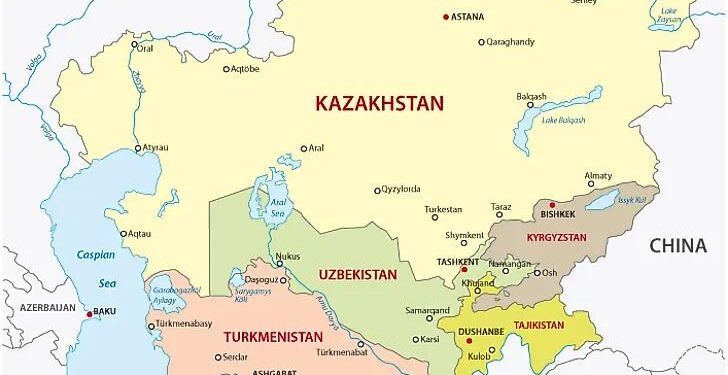Connectivity as a Catalyst: How Central Asia Can Thrive in the Age of Artificial Intelligence
As the global landscape rapidly shifts toward digital transformation, Central Asia faces a defining moment in embracing artificial intelligence (AI). Despite its rich cultural legacy and strategic location bridging East and West, the region confronts distinct obstacles in harnessing AI to drive economic progress and social advancement. This analysis highlights the indispensable role of enhanced connectivity—both within Central Asian nations and with international networks—as a cornerstone for successfully adapting to AI-driven change. We explore emerging opportunities, persistent challenges, innovative regional initiatives, and policy measures vital for unlocking AI’s transformative potential. At this critical juncture, fostering intelligent and inclusive connectivity is paramount for Central Asia’s future.
Harnessing AI to Revolutionize Core Industries in Central Asia
Central Asia stands at an intersection where centuries-old traditions meet cutting-edge technology. The integration of artificial intelligence across sectors such as agriculture, healthcare, and education offers unprecedented avenues for growth. For instance, precision agriculture powered by AI-driven sensors can optimize water usage and crop yields amid climate variability—a pressing concern given that over 60% of the region’s population depends on farming. In healthcare, predictive analytics enable early diagnosis of chronic diseases like diabetes and cardiovascular conditions prevalent in countries like Kazakhstan and Uzbekistan. Meanwhile, adaptive learning platforms can tailor educational content to diverse student needs across urban centers and remote areas alike.
To capitalize on these prospects fully requires deliberate efforts encompassing policy reform, infrastructure enhancement, and dynamic public-private collaboration. Key priorities include:
- Expanding digital infrastructure: Bridging connectivity gaps especially in rural communities where internet penetration remains below 50%.
- Launching comprehensive AI education initiatives: Preparing a workforce skilled not only in coding but also data ethics and machine learning applications.
- Cultivating innovation ecosystems: Supporting startups through funding mechanisms that encourage research into locally relevant AI solutions.
| Metric | Central Asia | Global Benchmark |
|---|---|---|
| Internet Access Rate (2024) | 67% | 75% |
| Annual AI Publications | Approx. 6,000 papers | Around 1 million papers |
| Total Startup Investment (2023) | $350 million | $600 billion+ |
By addressing these gaps while leveraging its unique strengths—such as multilingual talent pools—the region can redefine its role within the global digital economy.
Modernizing Infrastructure: The Backbone of Connectivity in an AI-Driven Era
For Central Asia to keep pace with rapid technological advancements worldwide—including those seen recently with widespread adoption of generative AI models—it must prioritize building resilient infrastructure capable of supporting high-speed data transmission demands.
This entails deploying advanced telecommunications technologies like widespread 5G coverage complemented by fiber-optic networks extending beyond major cities into underserved regions such as Kyrgyzstan’s mountainous zones or Turkmenistan’s desert expanses. Additionally:
- Evolving data center capabilities: Upgrading existing facilities or establishing new cloud hubs will be essential to manage exponentially growing datasets generated by smart devices connected via IoT platforms.
Collaboration with leading international tech firms can accelerate knowledge transfer while ensuring best practices are adopted efficiently.
Equally important is nurturing a digitally inclusive culture through targeted educational programs aimed at enhancing digital literacy among all demographics—from rural youth gaining their first internet access to professionals transitioning into tech-centric roles.
| Main Focus Area | Description & Impact | ||||
|---|---|---|---|---|---|
| Diversify Network Technologies (5G & Beyond) |
Create robust wireless infrastructures enabling seamless real-time communication necessary for autonomous systems or telemedicine services.....< td > Data Center Expansion< / td >< td > Build scalable cloud computing resources tailored towards local business needs while reducing latency issues common when relying solely on foreign servers.< / td > | ||||
| Policy Measure | Description < / tr > < / thead > |
|---|---|
| Tax Incentives for Skill Development Programs | Encourage businesses investing resources into employee upskilling by offering tax deductions or credits.< br />
< / tr > |
| Collaborative Curriculum Design Initiatives | Facilitate joint efforts between educators & industry leaders ensuring training aligns tightly w/ market demands.< br /> < br /> < br />
The provision of affordable access to modern technology tools remains crucial so learners from all socioeconomic backgrounds benefit equally from these initiatives—helping bridge existing divides exacerbated during recent years’ pandemic disruptions. Conclusion: Charting Central Asia’s Course Toward Sustainable Growth Through Connectivity And InnovationAs artificial intelligence reshapes economies globally at an accelerating pace—with projections estimating that over $15 trillion could be added worldwide by 2030—the urgency for robust connectivity frameworks becomes undeniable for regions like Central Asia striving not just to catch up but lead niche innovations adapted locally. Success hinges upon more than just upgrading physical networks; it requires cultivating collaborative ecosystems uniting governments, academia,and private sectors under shared visions prioritizing inclusivity alongside technological advancement. By committing resources toward expanding internet reach,to developing human capital,and fostering cross-border cooperation,the nations within this vast region stand poised not onlyto participate meaningfullyintheglobaldigitalrevolutionbut alsoto carve out distinctive competitive advantages rootedin their unique culturaland geographic identities.CentralAsia’s journeyintoanAI-poweredfuturehasjustbegun—andwithstrategicconnectivity,itcanbecomeamodelforemergingeconomiesworldwide. |














Italy to Deport Egyptian Imam After Controversial Comments at Pro-Palestine Rally